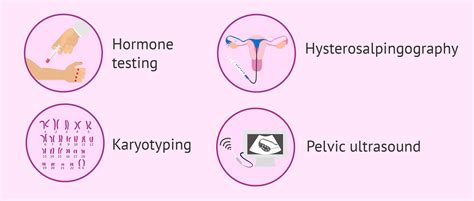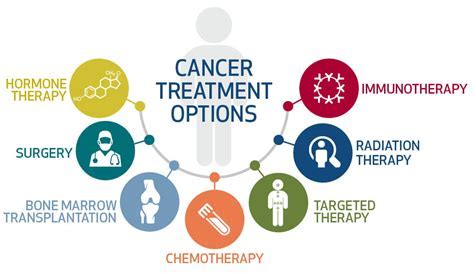Intro
Discover infertility tests and diagnosis methods, including fertility exams, ovulation tests, and hormone level assessments, to identify underlying causes of infertility and guide effective treatment options.
Infertility is a common issue that affects millions of people worldwide, and it can be a challenging and emotional experience for those trying to conceive. Fortunately, significant advances in medical technology and diagnostic techniques have made it possible to identify the underlying causes of infertility and develop effective treatment plans. Infertility tests and diagnosis play a crucial role in this process, enabling healthcare providers to determine the best course of action for each individual or couple. In this article, we will delve into the world of infertility tests and diagnosis, exploring the various methods used to evaluate fertility and the importance of accurate diagnosis in achieving successful outcomes.
The journey to parenthood can be a long and winding road, filled with excitement, anticipation, and sometimes, disappointment. For many individuals and couples, the inability to conceive can be a source of significant stress and anxiety. Infertility tests and diagnosis offer a beacon of hope, providing a clear understanding of the underlying factors contributing to fertility issues. By undergoing comprehensive evaluations, individuals can gain valuable insights into their reproductive health, allowing them to make informed decisions about their treatment options. Whether it's addressing underlying medical conditions, making lifestyle changes, or exploring assisted reproductive technologies, accurate diagnosis is the first step towards overcoming infertility.
The importance of infertility tests and diagnosis cannot be overstated. These evaluations not only help identify the causes of infertility but also enable healthcare providers to develop personalized treatment plans tailored to each individual's or couple's unique needs. By combining medical history, physical examinations, and diagnostic tests, healthcare providers can create a comprehensive picture of a person's reproductive health, highlighting potential areas of concern and opportunities for improvement. Furthermore, infertility tests and diagnosis can also help identify any underlying medical conditions that may be contributing to fertility issues, such as polycystic ovary syndrome (PCOS), endometriosis, or low sperm count. By addressing these underlying conditions, individuals can significantly improve their chances of conceiving and carrying a healthy pregnancy to term.
Types of Infertility Tests

Female Infertility Tests
Female infertility tests are designed to evaluate the various aspects of reproductive health that may be contributing to fertility issues. These tests may include: * Pelvic exam: A physical examination to evaluate the reproductive organs, including the uterus, cervix, and vagina. * Pap smear: A test to detect any abnormal cell changes in the cervix. * Endometrial biopsy: A test to evaluate the lining of the uterus and detect any abnormalities or conditions, such as endometriosis. * Hysteroscopy: A procedure to visualize the inside of the uterus and detect any abnormalities, such as polyps or fibroids.Male Infertility Tests

Unexplained Infertility
Unexplained infertility refers to cases where the underlying causes of infertility cannot be identified through standard testing and evaluation. This can be a challenging and frustrating experience for individuals and couples, as it may require more extensive and invasive testing to determine the underlying causes. However, with advances in medical technology and diagnostic techniques, healthcare providers can now offer a range of treatment options, including assisted reproductive technologies, such as in vitro fertilization (IVF) and intracytoplasmic sperm injection (ICSI).Treatment Options

Assisted Reproductive Technologies
Assisted reproductive technologies (ART) offer a range of treatment options for individuals and couples struggling with infertility. These technologies include: * In vitro fertilization (IVF): A procedure where eggs are retrieved from the ovaries, fertilized with sperm in a laboratory, and transferred to the uterus. * Intracytoplasmic sperm injection (ICSI): A procedure where a single sperm is injected into an egg to facilitate fertilization. * Donor egg or sperm: The use of donated eggs or sperm to conceive, either through IVF or ICSI. * Surrogacy: The use of a gestational carrier to carry a pregnancy to term.Conclusion and Next Steps

We invite you to share your thoughts, experiences, or questions about infertility tests and diagnosis in the comments below. Your input can help others who may be going through similar challenges, and we're here to provide support and guidance every step of the way. Additionally, if you found this article informative and helpful, please consider sharing it with others who may benefit from this information.
What are the most common causes of infertility?
+The most common causes of infertility include ovulation disorders, polycystic ovary syndrome (PCOS), endometriosis, low sperm count, and blocked fallopian tubes. However, the underlying causes of infertility can vary widely, and a comprehensive evaluation is necessary to determine the best course of action.
How long does it take to get a diagnosis of infertility?
+The time it takes to get a diagnosis of infertility can vary depending on the individual or couple's unique circumstances. In some cases, a diagnosis may be made after a few weeks or months of testing and evaluation, while in other cases, it may take longer. It's essential to work with a healthcare provider to determine the best course of action and develop a personalized treatment plan.
What are the most effective treatment options for infertility?
+The most effective treatment options for infertility depend on the underlying causes and individual or couple's unique needs. Assisted reproductive technologies, such as in vitro fertilization (IVF) and intracytoplasmic sperm injection (ICSI), can be highly effective, while lifestyle changes, medications, and surgery may also be recommended. It's essential to work with a healthcare provider to determine the best course of action and develop a personalized treatment plan.
